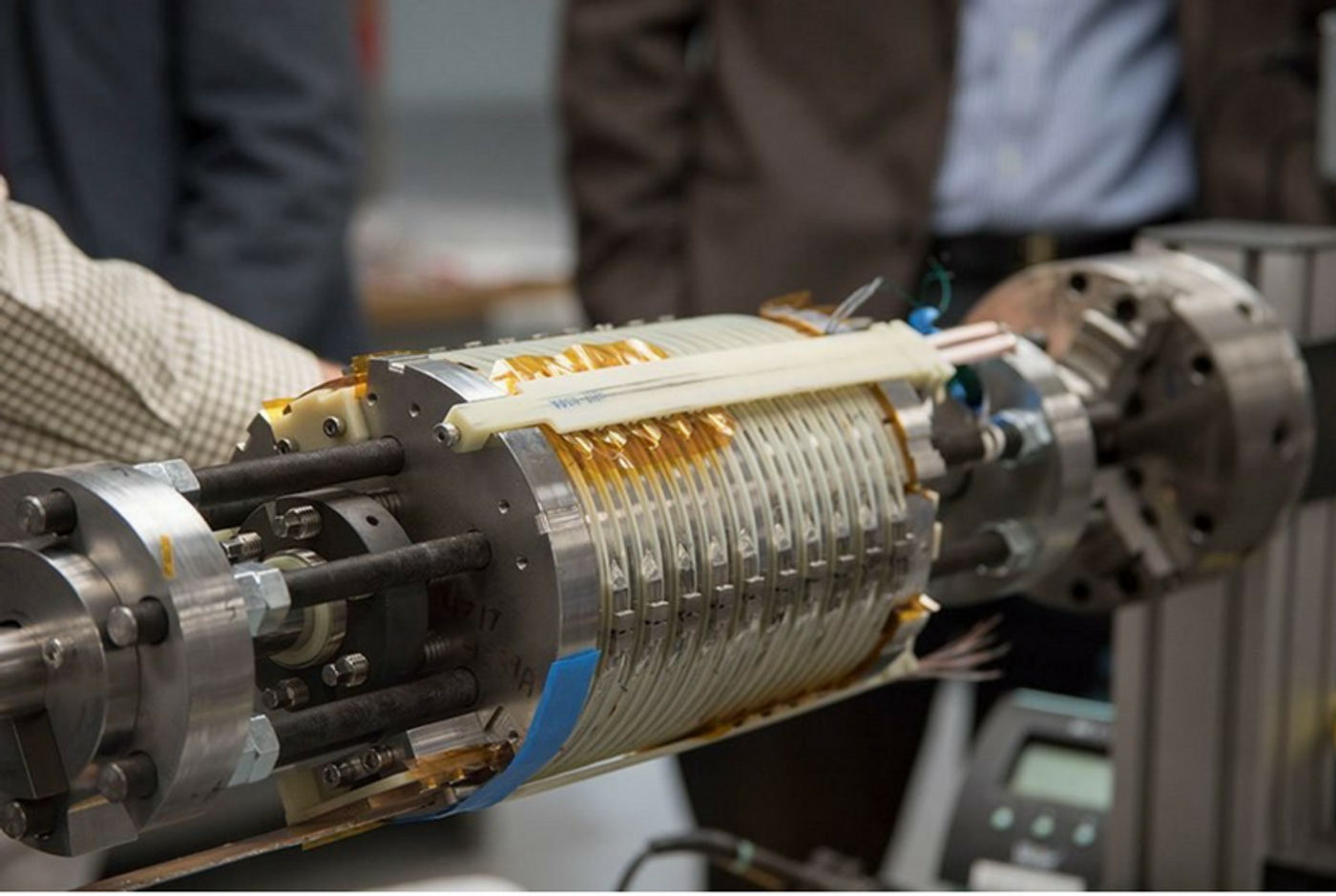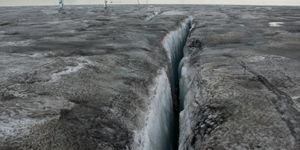This "Super" Magnet Just Shattered A World Record
One of the two high-temperature superconducting coils used in the “super” magnet. Credit: National MagLab
The world’s once strongest magnet has just broken another record. On December 8, the researchers from the National High Magnetic Field Laboratory (MagLab) at Florida State University announced that their ground-breaking superconducting magnet reached a magnetic field of 32 teslas, a 7-unit increase from their last world record in 2011.
Tesla is a unit of magnetic flux density. One tesla is equal to one weber per square meter, corresponding to 10 thousand gausses. It is named after the Serbian-American engineer and physicist Nikola Tesla. So how strong is 32 teslas (or 32 T)? For comparison, that is half a million times stronger than Earth’s magnetic field, over 3,000 times stronger than your fridge magnet, and ten times strong than the best MRI (magnetic resonance imaging) scanner.
Unlike your fridge magnet, which is made from magnetized material and creates a static magnetic field, the 32 T “super” magnet relies on a different mechanism—high electric current cycling through superconducting coils—to generate its powerful field.
Take a trip down memory lane back to high school physics class. If you had paid attention, you would remember that an electric motor is powered by the electromagnetic force: the electricity going through circular loops of copper wire creates a magnetic field. And as the current gets strong, so does the field. Since the material in the coil is resistive, the strength of electricity is lost to the generation of heat. A superconducting magnet generates no heat hence no loss of energy.
The design of the MagLab’s super magnet combines a conventional “low-temperature” superconductor and a novel superconductor that works in “high-temperature”.
The “low-temperature” superconductors can conduct electricity with perfect efficiency (unlike copper, in which electrons encounter lots of friction), but work only in a frigid environment that is close to absolute zero cold, at a few kelvin or “K”. It would stop working inside magnetic fields over 25 teslas, which prevents superconducting magnets from achieving a higher magnetic field.
A discovery in 1986 allowed scientists to construct the so-called “high-temperature” superconductors, which not only work at warmer temperatures (somewhere between 138 K and 203 K, depending on the conductor material) but also have no bottleneck effect of the “low-temperature” superconductors in very high magnetic fields. The inventors Georg Bednorz and K. Alex Müller were awarded Nobel Physics Prize a year later for their break-through discovery.
According to Huub Weijers a MagLab engineer who oversaw the construction of the 32 T magnet, the recent achievement is just the beginning. He speculated that in not so distant future the device could be further optimized to obtain a field that is beyond 100 T. “The required materials exist. It's just technology and dollars that are between us and 100 teslas,” he said.
The MagLab’s 32 T magnet provides a very stable, homogeneous field that offers researchers both strength and stability. It will give scientists access to insights into the materials of different interest and break new ground in a variety of research areas.
This powerful magnet is expected to open the door for visiting scientists from around the world in 2018. As with all magnets at the MagLab, researchers can apply to use it to advance knowledge in physics, chemistry, and biology and performed works related to materials, health, and energy.
Behind the New World-Record Superconducting Magnet. Credit: National MagLab
Source: Florida State University









